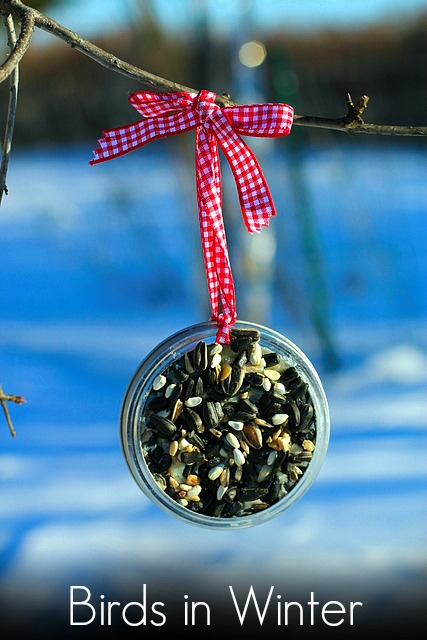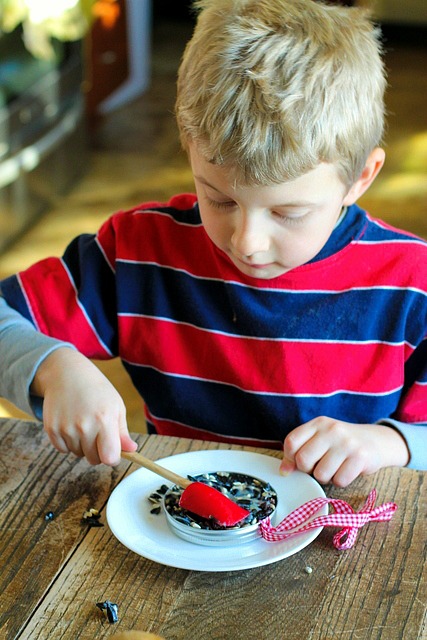Last weekend, our region experienced extreme sub-zero temperatures. While outside watching bubbles freeze, my youngest son noticed a fluffy bird shivering on our neighbor’s air conditioner. “Mommy,” he began, “I feel so bad for that little bird! It must be cold!” His empathy and curiosity led him to a series of excellent questions:
How do birds stay warm in winter?
Where do birds live in winter?
What do birds eat in winter?
With his last question, I realized that we had neglected to put out our bird feeders. We had work and learning to do – all for the sake of birds in winter!

How do birds stay warm in winter?
Birds have many physical and behavioral adaptations that help keep them warm in cold temperatures. Oily, waterproof feathers provide warmth and protection from all sorts of weather. When the temperature dips, birds can fluff their feathers to create warm air pockets for additional warmth. Like other creatures, birds can also shiver and build up a fat reserve to keep warm.
Where do birds live in winter?
In winter, most flocks of birds roost together at night to share body heat. Birds also seek the protection of hedges, shrubs, trees and empty bird houses. Naturally, dark surfaces retain heat from the day, so many birds enjoy the closeness of a tree trunk or dark structure.
What do birds eat in winter?
In the winter, food is often scarce for wild birds. To help them, people can set out feeders filled with high energy seeds and nuts. High fat nourishment, like suet, will help keep birds warm. And though the ground is covered with frozen water that birds are capable of melting themselves, this takes a great deal of energy. Keeping bird baths full of fresh, liquid water will help the birds save their calories for creating warmth!
Make your own suet feeder!
Suet is the fat from cattle or sheep. I can often find suet from my local grocery store or butcher for very little money – sometimes at no cost! At home I melt the suet and mix it with an assortment of bird seed, corn meal, and organic, chopped raisins. The suet can either be molded for use in a commercial suet feeder by using the square bottom of a cut milk carton, or press the suet into a canning ring wrapped with a ribbon (pictured above). Place the molded suet into your freezer for 30 minutes to harden. When the feeder is hardened, pop it from the mold (or leave it in the canning ring), and hang outside.

More ways to help birds in winter!
Fireflies and Mud Pies – Winter Bird Feeders: Create winter bird feeders using ice and snow!
Inner Child Learning – Hanging Shape Bird Feeders: Use gelatin, seed, and cookie cutters to create homemade bird feeders.
Inner Child Learning – Building Bird Feeders with Real Tools: Engage your child in the responsibility of using real tools to create a wooden bird feeder that can be filled with suet or peanut butter.
Inner Child Learning – How to Create a Wildlife-Friendly Backyard: Learn how to invite wildlife into your backyard, and how to convince them to stay!
Observing birds, learning about their many adaptations to stay comfortable in cold weather, and helping birds stay warm and fed in the winter is a fulfilling experience for children and adults!








